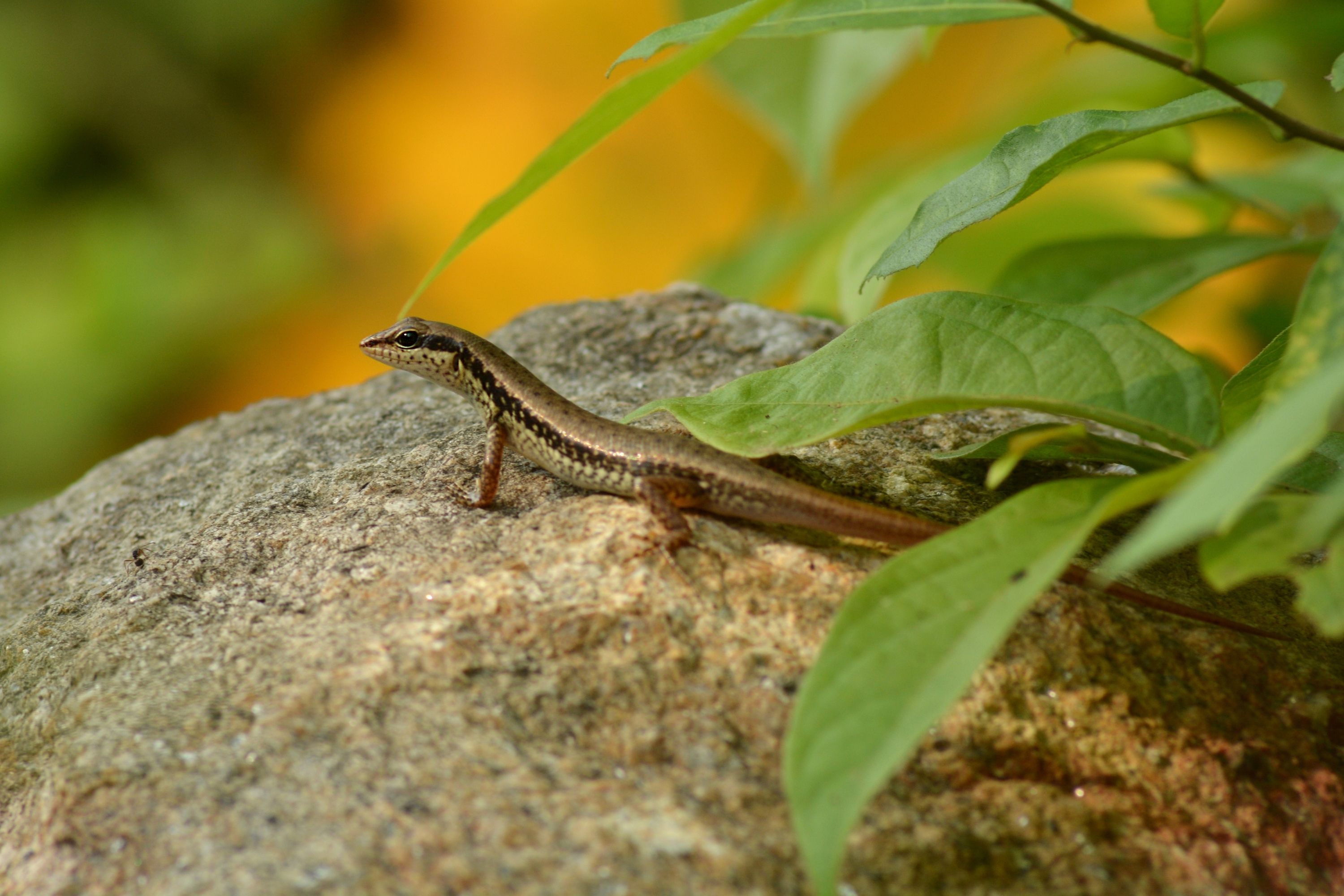Nine-keeled sun skink
(Eutropis novemcarinata)

Description
A side species is Eutropis novemcarinata. It was first described by Anderson in 1871. Eutropis novemcarinata belongs to the genus Eutropis, and is related to tabíli. The IUCN classifies the species as least related. Eutropis is a genus of skinks belonging to the subfamily Mabuyinae. For long, this genus was included in the "wastebin taxon" Mabuya; it contains the Asian mabuyas. They often share their habitat with the related common skinks (Sphenomorphus), but they do not compete significantly as their ecological niches differ. This genus also contains the only member of the subfamily to occur in Australasia, the many-lined sun skink (Eutropis multifasciata), whose wide range includes New Guinea. They are mid-sized to largish lizards with cylindrical bodies, tails of medium length, and well-developed arms and legs; the hands and feet have 5 toes each. Their cycloid scales are underlaid by osteoderms; the scales on the back and belly are similar in shape, but those on the back are keeled. The scales on the top of the head are generally flat and subimbricate; they have a pair of supranasal scales and the frontoparietal and prefrontal scales are paired or fused. The second supraocular scale is the hindmost one that contacts the frontal scale, and the tertiary temporal scale extends forward to separate the secondary temporal scales. The nasal scale is undivided. Eutropis mabuyas have 26 presacral vertebrae. Their palatine bones are in contact with the median; the deep sphenopalatine notch separates the pterygoids and extends forwards to between the centre of the eyes. The fairly small teeth are pleurodont, and the pterygopid always bears teeth. The ear opening is small, and the eardrums are hidden in a moderately deep ear canal.
Taxonomic tree:







